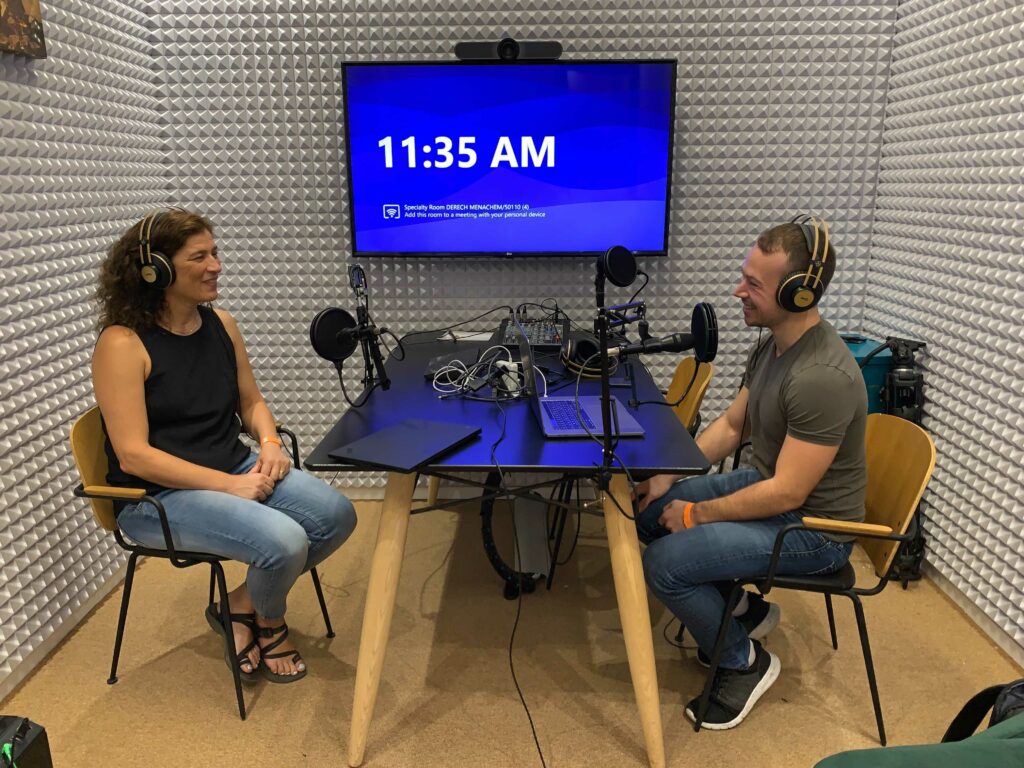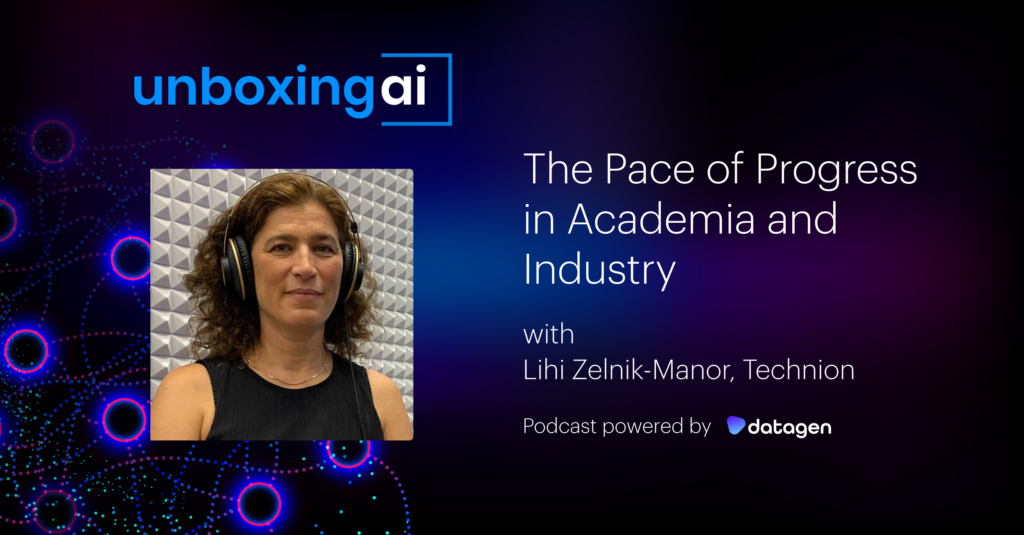The Pace of Progress in Academia and Industry

In a recent Unboxing AI podcast episode, Gil Elbaz, Datagen co-founder and CTO, sat down to speak with Lihi Zelnik-Manor, an associate professor in the faculty of electrical engineering at the Technion, and the former general manager of Alibaba DAMO Israel Lab.
Professor Zelnik-Manor holds a PhD and MSC with honors in computer science, from the Weizmann Institute of Science and a BSC in mechanical engineering from the Technion. Her main area of expertise is computer vision. Professor Zelnik-Manor has done extensive community contribution, serving as the general chair of CVPR 2021, and will serve as the general chair of ECCV 2022 and as the program chair of ICCB 2025.
This transcript has been edited for length and clarity. Listen to the full episode here.
Interplay between academia and industry
Zelnik-Manor: In industry, you have resources that you might not have in academia, but in academia, you have resources that you don’t have in industry. I think academia and industry have different roles. Industry picks up domains that are mature and have short term outcomes and short term impact.
Academia has the option, but also, I think, the duty to think long-term. Deep learning grew in academia. Quantum grew in academia, and there are many other domains that grew there and then they shifted to industry. What I hope to see is that academia will find its focus on problems that need to be thought about or new things entirely.”
Teaching advice
Zelnik-Manor: When I started my career as a professor, I went to ask for advice. How should I choose my students? People gave me different advice. Some said to choose the ones that are best in math, all kinds of stereotypical things.
The advice I really liked a lot was: choose someone who is excellent in something unrelated to work. So it can be excellence in music or excellence in sports or excellence in whatever. Choose those people, they will nourish you better. This is a good guideline because people have different preferences and different goals.
How to create a team
Zelnik-Manor: If you go back to the 1990s, teams were organized by profession. For experts in graphics, there was a graphics team and teams were generally organized by their expertise. If you wanted, for example, to create a product or a feature that required a mobile developer and a backend developer and an algorithm and product manager, you would take each of them from their individual teams. Each of these people would now have to communicate and align their plans. These are teams who have people with diverse expertise. They’re like an independent unit that can deliver the feature or the product.
A squad could have one person from each of those teams. A squad can be formed for a certain task and you could disassemble them when the task is complete. If the task is continuous, they can remain as a squad and that makes it easier to manage and tie all the loose ends together in order to deploy in a timely manner. Their OKRs are aligned and they are working together for the same goal.
Getting started in CV
Zelnik-Manor: To get started in computer vision, I would recommend going through the traditional path, studying, getting a strong bachelor’s degree and then a PhD.
A PhD gives you a chance to become a world expert in something. Then you have this unique knowledge base to take with you for life. From my perspective, of having a career for many years, I see myself using different aspects of the things that I’ve learned. It used to be geometry, then it’s statistics and probability, and optimization and programming and different languages.
You can work now until you’re 80. So we’re talking about 50, 60 years of work. How do you prepare yourself for that? I would recommend building a very strong infrastructure in math, computer science, and physics. Build the infrastructure of the tools, and then you can always learn and evolve and continue to remain relevant.
It’s about the people
Zelnik-Manor: I think there’s a citation from Steve Jobs, I don’t remember the accurate wording, but something like – it’s not about the technology, it’s about the people. Put your faith in the people. Communication is very challenging because people often think it has happened and maybe it hasn’t. At the end of the day, I don’t think the main barriers for the success of our products and technologies are the technologies. They are the people who do it.
If you recruit the right people that like the vision and mission, they believe in it. They’re passionate about their profession. Doesn’t matter a mobile engineer or an algorithm or researcher. If they’re passionate about what they’re doing and they join a company that they love, its mission and vision, and they fit the culture, then you have everything in place.





























